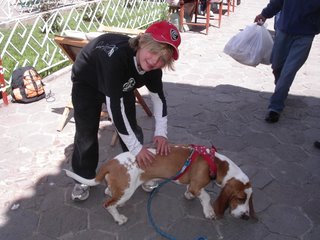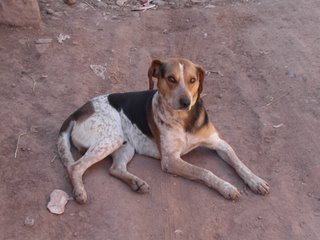









There are lots of dogs in Cusco and, perhaps not inconsequentially, not a lot of cats although I did spy at least two pet monkeys. Most dogs are nominally owned, or at least have developed a relationship with a human where one provides protection in exchange for scraps of food, but then most dogs also spend much of their time running in packs with their buddies. It is neither uncommon to see dogs lazing about on the streets nor to see them trotting off somewhere as though they didn’t want to be late for an important social engagement. My father tells me that this was the case in the small Minnesota town in which he was raised in the mid-twentieth century and was a generally accepted part of life. Now, however, we’ve grown used to dogs being restrained and, for the most part, quiet. Such is not the case in Cusco and the slumber of both my mother and my wife were quite troubled by the barking and fighting and romancing of dogs in the night. Given both their propensity and lack of discretion in the area of romance (one can learn a lot from dogs – just sink your teeth into that ear and don’t let go, no matter what) I found the sheer variety of recognizable breeds to be of some surprise. After a few generations, one would expect a trend toward commonality. For instance, in Baja, Mexico, where there is also little attention given to vaccination or spaying and neutering, there is, not surprisingly, a strong genetic tendency toward long, yellow, short dogs. However in Peru there seems to be more interest in breeding and purchasing specific breeds of dogs. While we were in Peru, our neighbor bought the schnauzer you see in the picture above. In another picture you can see a tattoo parlor owner (dressed in black) displaying his hairless something or another (dog, of course); a breed that also seemed quite popular. I was attacked by what looked like a full-breed rottweiler and other breeds abound.




















0 Comments:
Post a Comment
<< Home